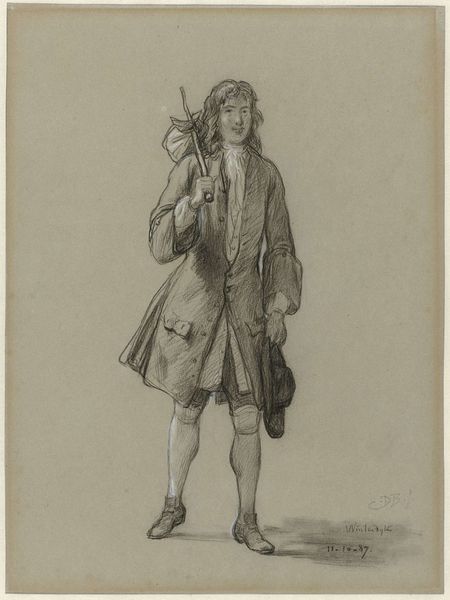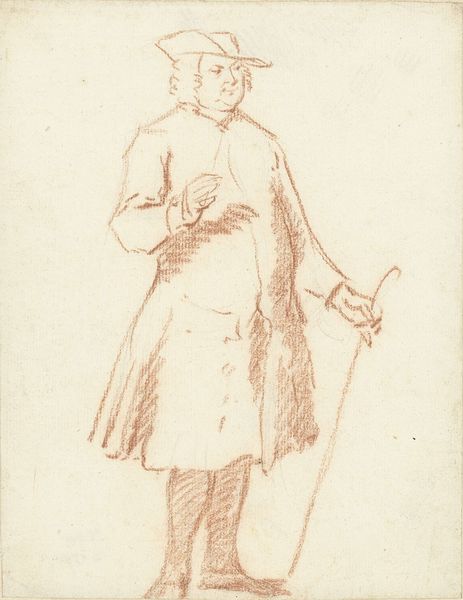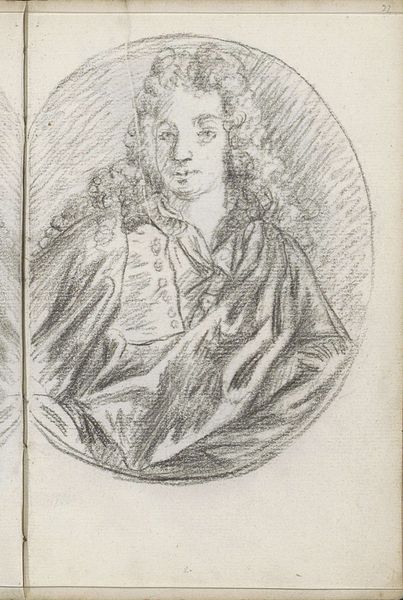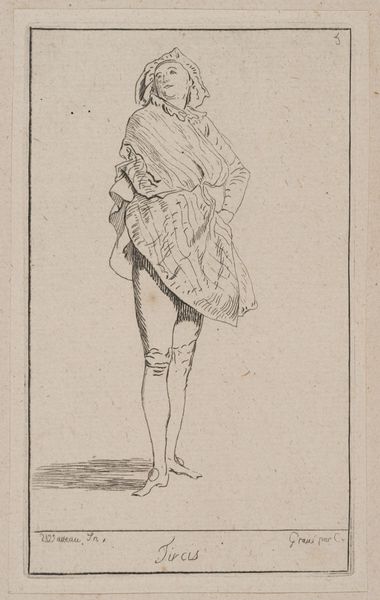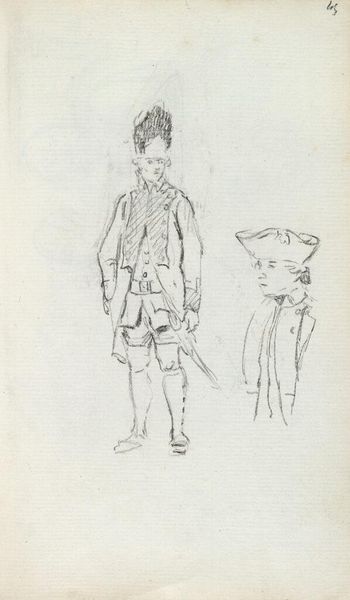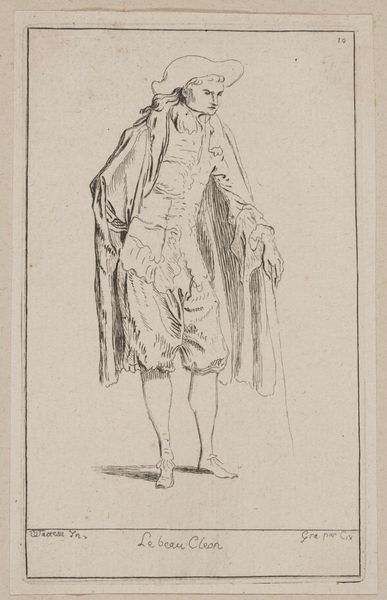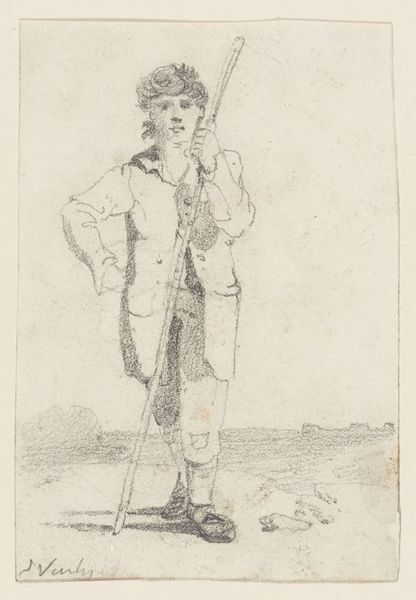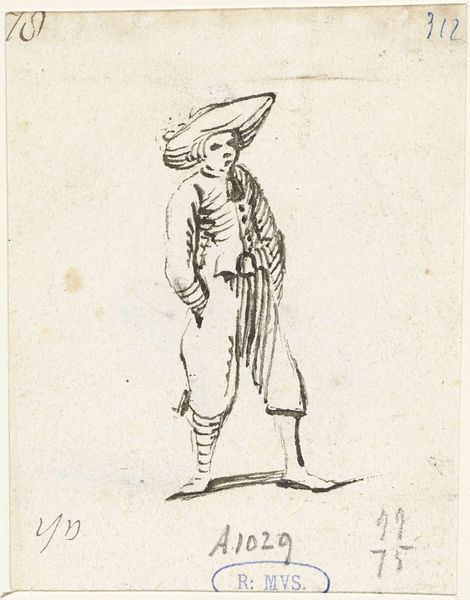
drawing, pencil
#
portrait
#
drawing
#
baroque
#
pencil sketch
#
sketch book
#
figuration
#
pencil
#
pencil work
Copyright: Rijks Museum: Open Domain
Curator: Ah, this delicate pencil sketch transports us straight back to the Baroque era. This is "Standing Young Man" by Petrus Johannes van Reysschoot, thought to have been created sometime between 1710 and 1772. Editor: The young man strikes me as if he knows some juicy secret. He looks almost caught mid-pose. A hesitant, fragile kind of pride, don’t you think? It’s faint, but there's something endearingly human. Curator: Indeed. You have to appreciate how Van Reysschoot captured such detail using just a pencil. Note the intricacies of his coat—the meticulous ornamentation, the fall of the fabric. It gives us a glimpse into the fashions and the self-presentation of the time. Editor: And the hatching in the background – sketchy as can be – really gives it that caught-in-the-moment feel. Like it's been snatched right out of Van Reysschoot's sketchbook. Speaking of, imagine finding this drawing in some forgotten attic – a real gem from the past. It's raw, you know, but intensely refined all at once. Curator: I'm fascinated by how artists use sketches not just as preparation for larger works, but as works unto themselves. Drawings like these provide a wonderful view of a slice of 18th century culture—of the values and aesthetics they lived by. It’s a subtle window into that society. Editor: Totally. And his slightly wonky eyes kind of grab you too. Not conventionally "handsome", but deeply charming, precisely because it captures real humanity and doesn’t bother idealising things. It invites empathy. We see someone wrestling to find their poise in the world and its performativity, centuries later. How fascinating. Curator: Ultimately, "Standing Young Man," serves as more than just a record of fashion or a study of form, it is a point of entry into understanding the attitudes towards class, persona and representation that framed the early modern world. Editor: I completely agree. Van Reysschoot leaves us pondering the essence of personality, the awkward dance of presence, which never really leaves us—doesn’t matter if it’s 1750 or today. An intimate moment, really.
Comments
No comments
Be the first to comment and join the conversation on the ultimate creative platform.

